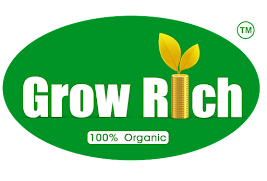Coir Pots
What are Coir Pots?
Coco-coir pots are made up of the coconut hull that is derived from the fibrous body between the husk and the coconut. These biodegradable pots are an excellent growing medium because plants can be transplanted into the pot itself. Coco-coir pots have an exceptionally high permeability to water, air and roots. The coir pots break down naturally in the soil, which minimises root disturbance at the time of planting. Gardeners looking for faster cultivation, an excellent root system and re-establishment without any shock from transplanting use Coco Coir Pots.
Benefits of using Coir Pots:
1. Water Holding Ability of Coco Coir:
Coco coir has excellent water holding capacity while still promoting good drainage and aeration. Unlike peat, moss coir is 100% biodegradable. As an average coconut tree produces 150 coconuts in a year, there is a continuous supply of coir. It is said that peat bogs take like 25 years to renew, while Coco coir is constant. Coconut fibre has become a favoured grow medium also because it prevents nutrients from leaching away.
2. Coco coir pots allow the roots to grow freely:
The texture of the coir pots allows the water and air to penetrate quickly. Due to this, the roots can breathe, and there is no concussion of roots. Coir also helps in the diffusion of water and air, which helps the roots, to permeate the walls of the pots with complete ease.
3. Beneficial pH Value:
pH value of coir is neutral i.e. between 5.2 and 6.8. On the contrary peat moss is considered acidic as its pH value is of 3.3 to 4. Thus, coco coir pots are ready to use for most plants without adding lime. Nutritionally, coco coir is rich in potassium, iron, manganese, copper and zinc. So, if you are growing hydroponically, you can consider using these pots as they can provide the correct balance of nutrients.
Secondly, Coir also has a high cation exchange rate that allows it to store various nutrients and release them as and when needed. On the other hand, coir tends to hold on to calcium and magnesium; thus you will have to adjust your nutrient mix accordingly. Coir is also known to promote the growth of beneficial bacteria owing to its compounds called lignins. When lignins are present, the beneficial bacteria thrive, and bad ones are minimised. When coir is used in hydroponics, the beneficial microbes will be optimised. Thus, using coir pots will ensure better growth, higher yield and less disease infestation.
4. Coco Coir is Packed with Nutrients:
Coconut fibre is rich in hormones and bio-stimulants that encourage plant growth. When grown in coir pots the plants benefit from those natural growth enhancers. As coir is compaction resistant and does not break down, it lasts as much as three times longer when compared to peat moss. Most importantly coir is an economical choice.
5. Use Coco Coir as a Potting Medium:
Coir can be used as the soil, and it is available in a ready-to-use form in bags. It is also available in tightly packed, lightweight bricks, that can be expanded up to six times the original size – simply by adding water. Even if you end up adding too much water, don’t worry, excess water just drains off. Also, remember that even when coir feels dry when touched, it retains plenty of water in its tube-like fibres. When using coir instead of soil do not forget to fill each pot loosely with coir, plant and water it well.
6
. Coco Coir can be recycled:
Coir once used can be recycled. Since it is fibrous, excellent in breaking the clay soil and can improve the water-holding capacity of the soil, you can blend it with your garden soil outdoors. You can also use it for mulching as it can inhibit weeds and help the soil retains its moisture. Hence you need not throw away the used coil as it can be utilised in some way or the other.



Comments
Post a Comment